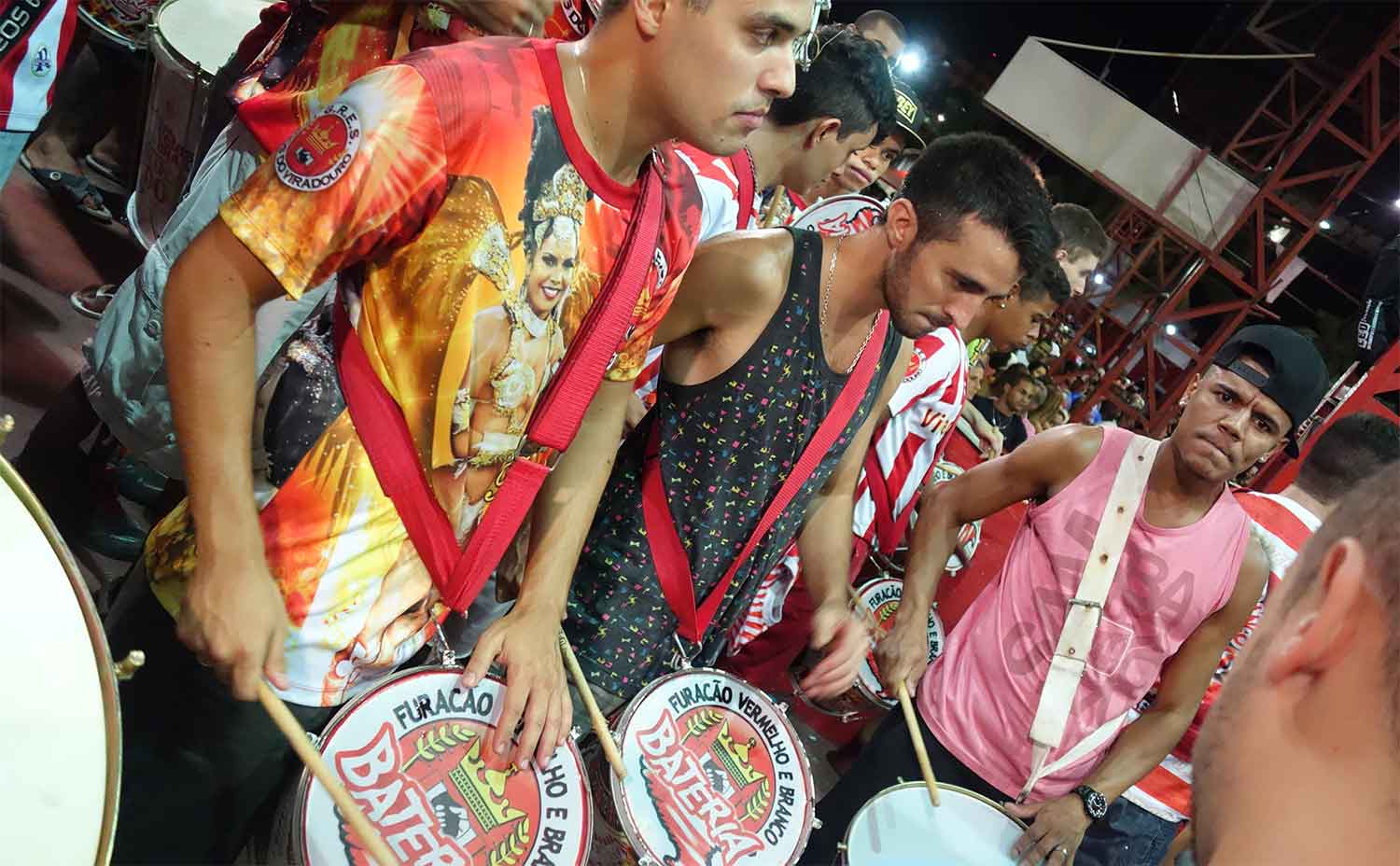
Repinique / Repique
The Repinique or Repique has its origins in Candomblé - an Afro-Brazilian religion with traditional musical ceremonies brought to Brazil from Africa with the slaves - and is therefore played with a stick and a bare hand, just like its ancestor, the rum. In Candomblé rituals, a set of three drums - lê, rumpi and rum - plays a central role. The technique for playing the Repinique is very similar to playing the rum - with a stick and the bare hand. The technique of the Repinique is certainly one of the more difficult for beginners to learn, but you don't have to be a virtuoso to play repinique. Much more important to the Mestres is that the groove sounds clean and that the chamadas and calls are played well in time.
The Repinique is the instrument which is responsible for the warm-up, in the form of question answer answer breaks, for the start as well as the re-entry after breaks. In many European samba groups only the leader plays repinique, but it is often forgotten that the repinique also plays a very important role in the groove. In Rio, for example, you will never see a mestre hanging a repinique around his neck and playing on it. The instruments of the mestre are his arms, hands, eyes... his gestures. But the repinique player stands in the middle of the bateria and plays the subidas and chamadas from there, so he can be heard well in all parts of the bateria.
The technique for playing the repinique is very demanding. The strong hand plays with a stick and the weak hand strikes the skin directly. The basic rhythm of the repinique consists of three strokes with the stick, the first being an accent almost in the center of the skin and the second and third strokes being played as a rimshot by controlled rebounds. The fourth stroke with the weak hand completes a count and the rhythm starts over again. For the weak hand, similar techniques apply as known from congas (slap and open). In the basic rhythm of the repinique, the slap is always played directly before count 2 and thus before the low note of the surdo de primeira.



